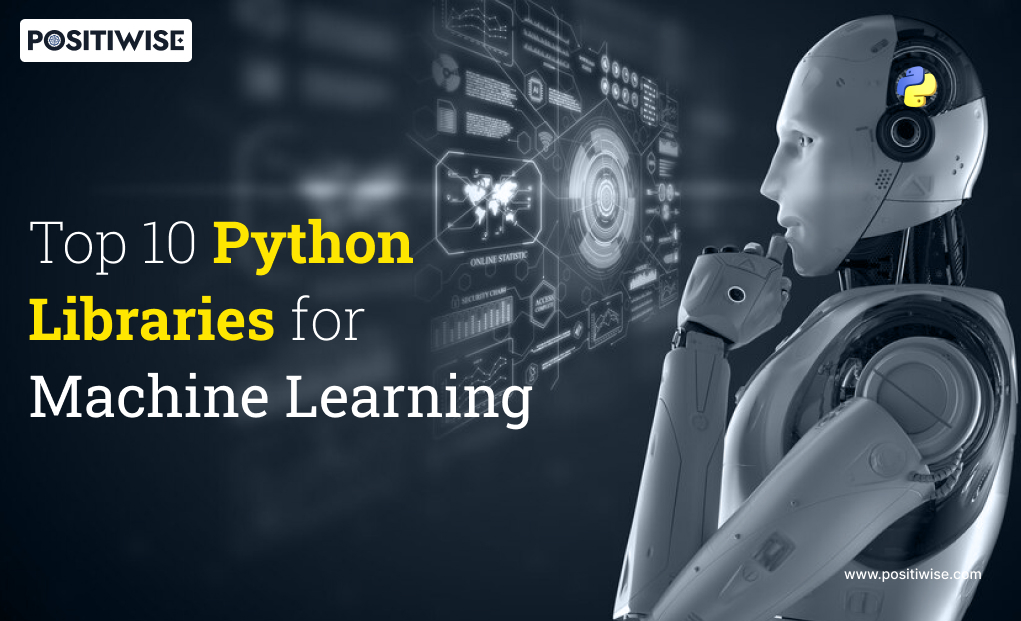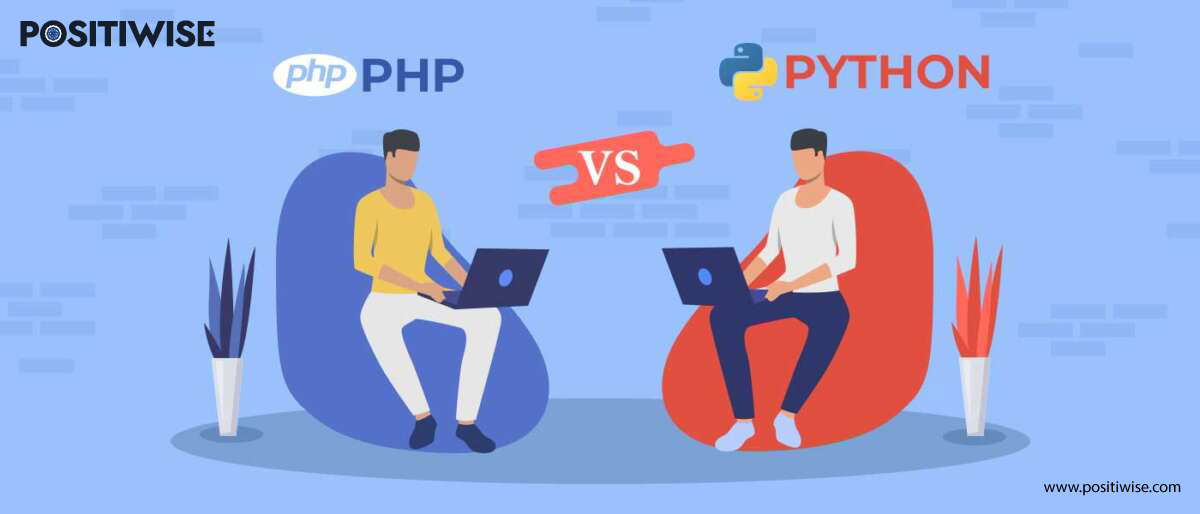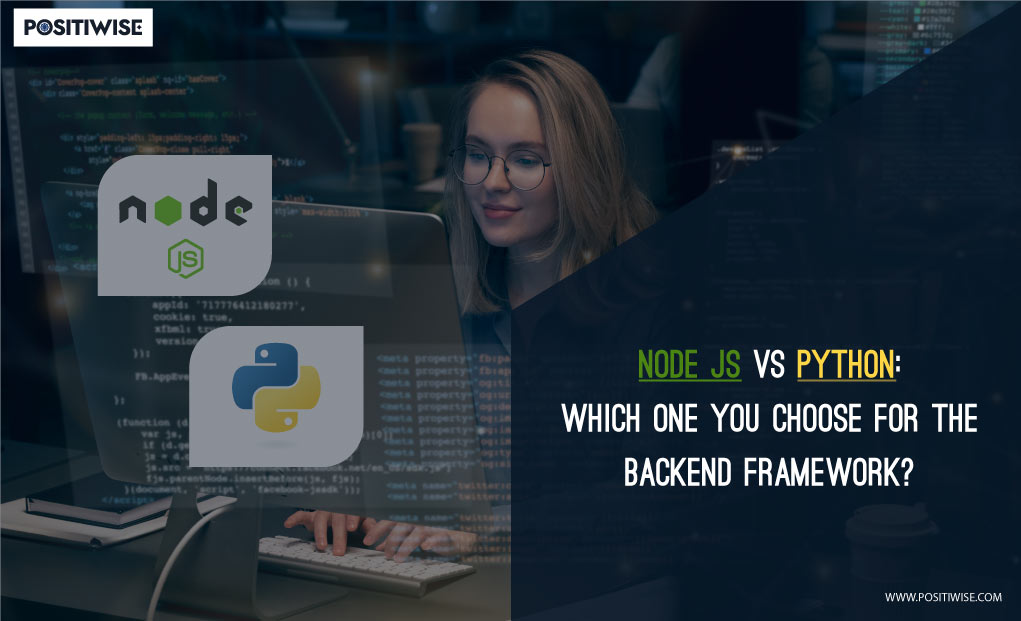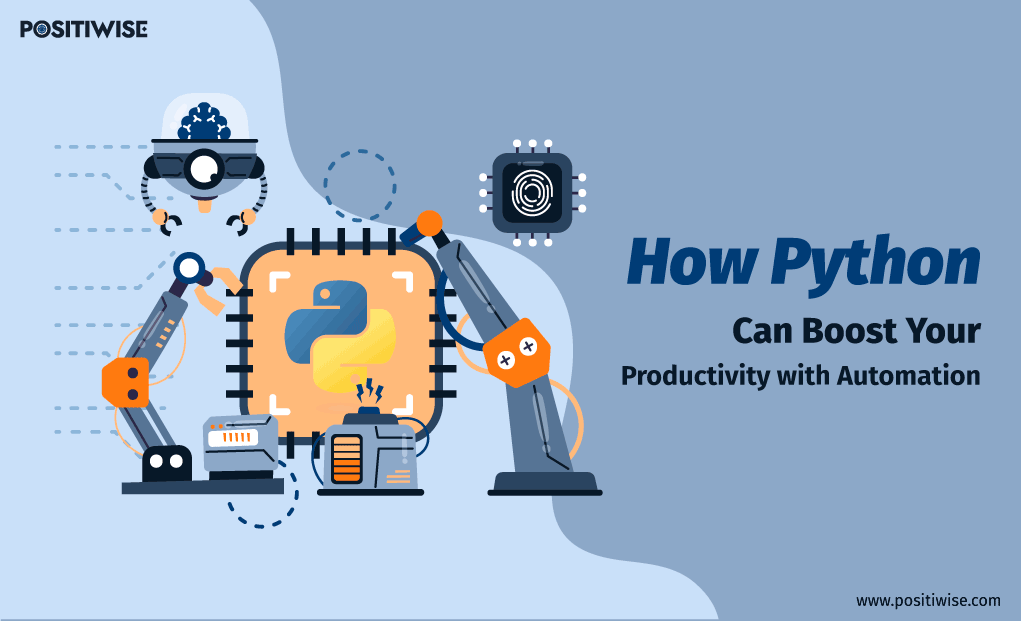Quick Overview:
This blog highlights ten essential Python libraries widely used in machine learning projects. These libraries provide tools and functionalities to streamline the process of building, training, and deploying machine learning models. For each one, the article provides an overview of its features, functionalities, and use cases.
Introduction
When it comes to Machine Learning (ML) projects, one programming language that has got significant traction is “Python”. As it is clearly visible in the below graph, Python programming for AI and ML is the major code language.
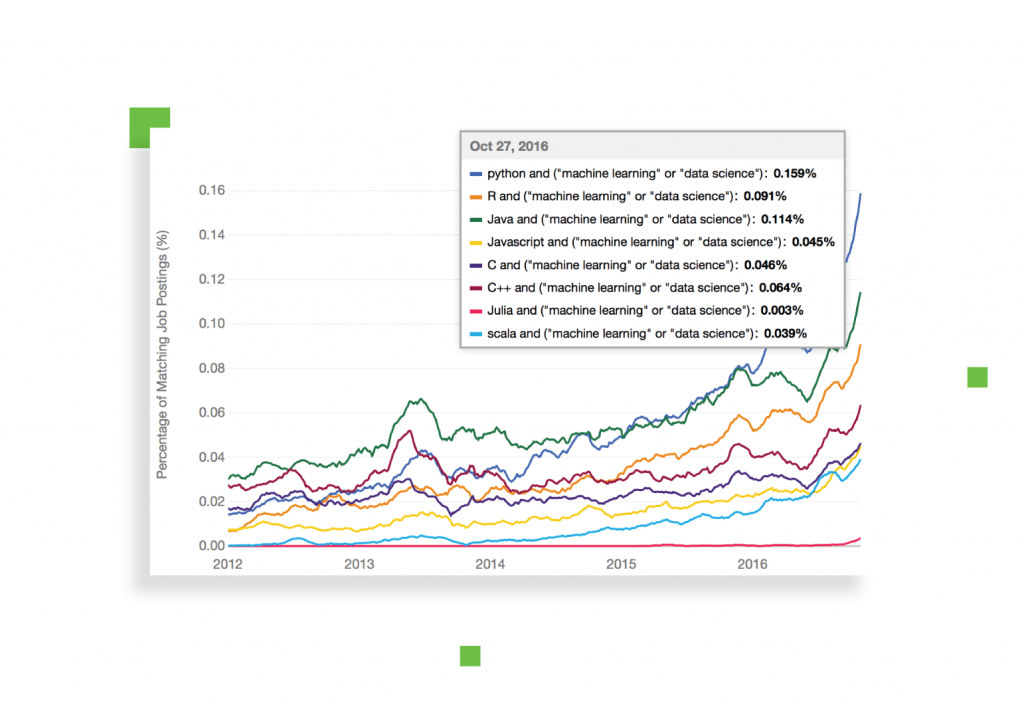
Its ease of learning and adaptability across different operating systems make it a preferred option among developers. Even the tech giant IBM uses Python to simplify and deploy machine learning pipelines.
Now comes the role of certain libraries that can be used to streamline tasks such as model creation and data visualization.
What are those libraries? This blog will answer!
Here, we will explore the top 10 Python libraries for machine learning that Python developers and data scientists can use to build robust machine learning models. Let’s first have a quick overview of what exactly a Python Machine Learning Library is.
What Is a Python Machine Learning Library?
A Python machine learning library is a set of tools and functionalities that simplify the process of implementing machine learning algorithms and models using the Python programming language.
These libraries come with a range of pre-built functions and methods that help Python development services to perform complex computations and build sophisticated machine learning models without having to write extensive code from scratch.
Today, Python machine learning libraries are widely used in various AI, ML, and deep learning applications. The whole credit goes to its efficiency in making apps scalable and adaptable. Let’s have a look at some more benefits of using these libraries!
Key Benefits of Using Python Machine Learning Libraries
- It has a great library ecosystem, most of which are free and open-source, and comes with comprehensive documentation as well.
- Python for machine learning is very flexible. It allows developers to choose their preferred programming styles and even combine them.
- Python Machine Learning libraries are versatile, which means these can run on different platforms, including Windows, MacOS, Linux, Unix, and others.
- These libraries are backed by huge community support where developers can help solve each other queries.
Top 10 Python Machine Learning Libraries
Keras

- Keras is an open-source and user-friendly Python ML library built on top of TensorFlow. It has a high-level interface that is used for creating and training neural networks.
- One of the significant advantages of Keras is that, along with standard neural networks, it also works seamlessly with convolutional and recurrent neural networks.
- Compared to other libraries, Keras is relatively easy to learn and implement. Why? It comes with a Python frontend with a high abstraction level and multiple back-ends for computation purposes.
- Keras’s nature is modular, extensible, and flexible, which ensures it works smoothly across different environments. Also, it is compatible with both CPU and GPU.
- It comes with extensive documentation and has a research community that is highly developed. Top companies whose products are deployed in the public domain, including Netflix, Uber, Square, Yelp, etc., are built using Keras.
TensorFlow
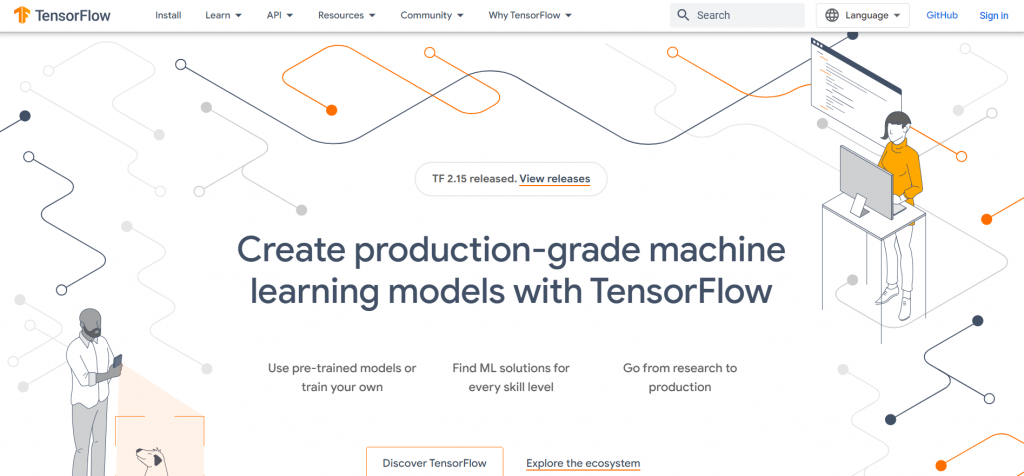
- Number one on our list of top Python Machine Learning Libraries is TensorFlow.
- It is a powerful open-source Python library developed by the Google Brain team in 2015. It is versatile, scalable, compatible and is used for numerical computations.
- It comes with a flexible architecture that is used for the creation of neural networks and large-scale systems. Also, it is highly scalable and can be deployed seamlessly on different platforms like mobile, web, and cloud environments.
- TensorFlow offers different levels of abstraction, so Python developers can choose the one according to their specific needs. For instance, while working on large ML training tasks, the Distribution Strategy API for distributed training can be used on different hardware configurations. All of this can be done without changing the model definition.
- It supports an ecosystem of powerful add-on libraries and models, including:
- Ragged Tensors,
- TensorFlow Probability,
- Tensor2Tensor and
- BERT.
- Overall, for both experts and beginners, TensorFlow is the perfect end-to-end platform for building and deploying ML models.
Scikit-Learn
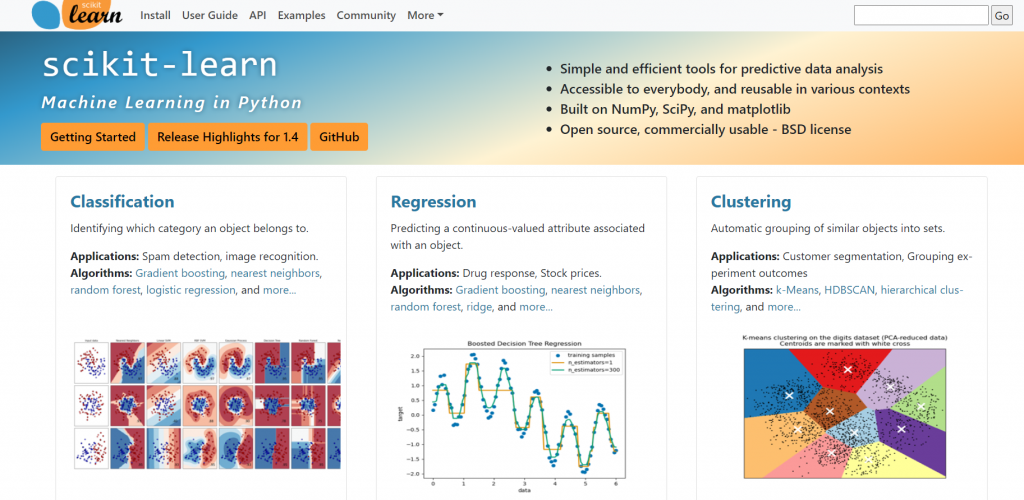
- It helps with tasks like handling missing data, sorting information, and converting categorical data into a usable format. Also, it can identify patterns and structures in data that don’t have pre-assigned categories.
- This Python library for Machine Learning is freely available and widely used. It is known for its simple and easy-to-use interface, making it accessible for both beginners and experts.
- Applications of Scikit-Learn include,
- Classify data into different groups based on characteristics or behaviors.
- Predict future outcomes based on existing data.
- Identify similarities or differences in data points without prior categorization.
- Simplifies complex data while retaining important information.
- Scikit-Learn can be seamlessly integrated with Python-based scientific and numerical libraries. This integration enhances software product functionality by using the capabilities of existing tools and libraries.
- Spotify uses Scikit-Learn to improve music recommendations and understand user preferences.
Matplotlib

- Next on our list of top Python libraries for machine learning is Matplotlib. It primarily focuses on data visualization and is used for creating graphs, plots, histograms, and bar charts.
- However, it is not directly related to Machine Learning but is highly recommended for visualizing data patterns. data pattern. Majorly, 2-dimensional graphs and plots are produced using Matplotlib.
- Built on top of NumPy, it allows developers to perform detailed data analysis. One of its modules, named Pyplot, makes the process of plotting easier, all credit goes to its tools and functionalities.
- Some of the major applications of Matplotlib include
- Helps in visualizing the relationship between two variables.
- Allows for data comparison by showing different bar sizes.
- Displays all the data in a 3-D landscape.
Pandas
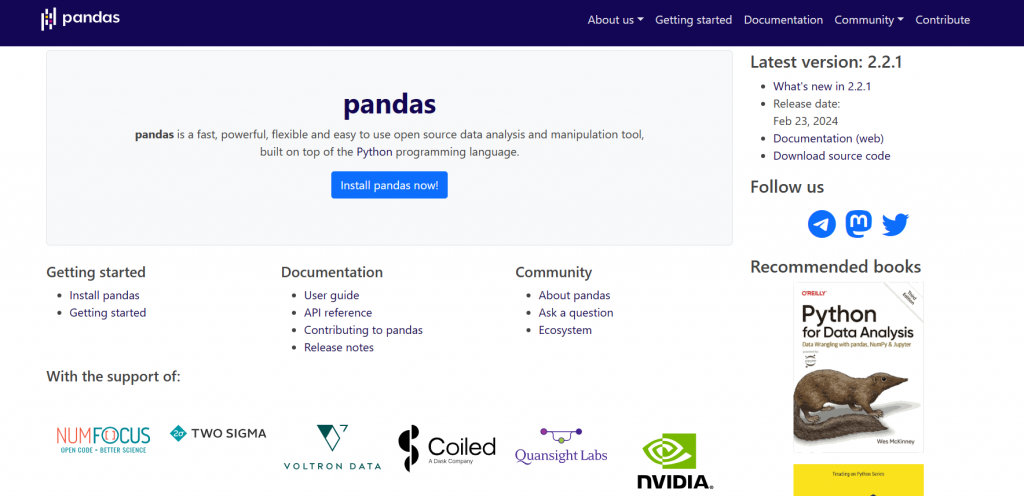
- Built on top of Python, Pandas is a fast, powerful, open-source data analysis and manipulation tool. It comes with high-level tools and data structures that are mainly used for extracting and organizing data.
- Some of its major library highlights include,
- Efficient DataFrame object for data manipulation.
- Various tools for reading and writing data.
- Data sets reshaping and pivoting.
- Time series-functionality
- Hierarchical axis indexing, etc.
- It converts data into data frames, making data handling more efficient and flexible. This library structure easily sorts, reshapes, and filters large data sets.
Plotly
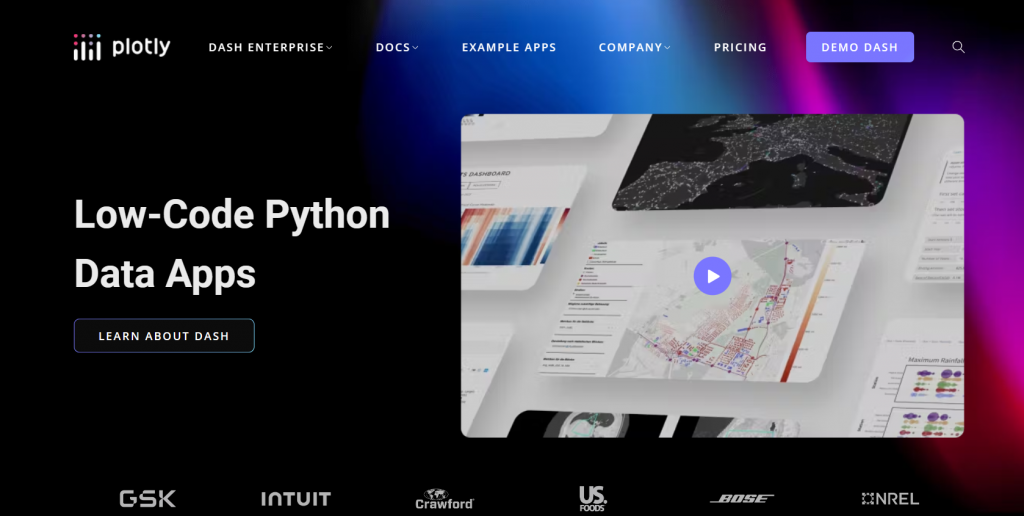
- Plotly is another popular visualization tool. It is used for making various types of graphs, heat maps, and other visual representations.
- Below are some of its major applications.
- Helps in creating a dashboard where users can interact with data, apply filters, and see real-time updates.
- Plot financial data trends and patterns with candlestick charts, commonly used in finance.
- Visualize data in three dimensions using scatter, surface, and contour plots.
- The best part of this tool is that it can be seamlessly integrated with various data analytics and visualization tools. Its capabilities extend to creating slide decks and dashboards for presenting data effectively.
- Plotly supports collaboration, teamwork, and knowledge sharing by letting multiple users work on the same visualization.
SciPy
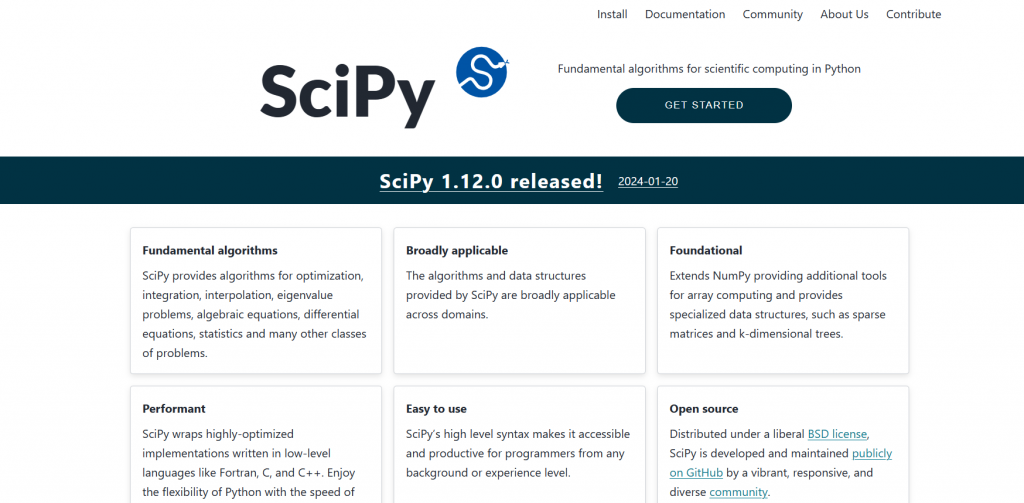
- Built on NumPy, SciPy is an open-source machine learning library that comes with high-level commands and classes for manipulating and visualizing data.
- The data structures and algorithms provided by SciPy are applicable across different domains. From beginner developers to experienced ones, its high-level syntax makes it accessible to everyone out there.
- With that being said above, SciPy is built on NumPy, which implies that if you import SciPy, there is no requirement to import NumPy.
- Do you know the main reason for SciPy’s popularity in machine learning projects? Because its different modules allow algorithm optimization, integration, interpolation, algebraic equations, differential equations, statistics, etc.
- SciPy can also be integrated with different Python libraries like Matplotlib, Pandas, and TensorFlow.
NumPy
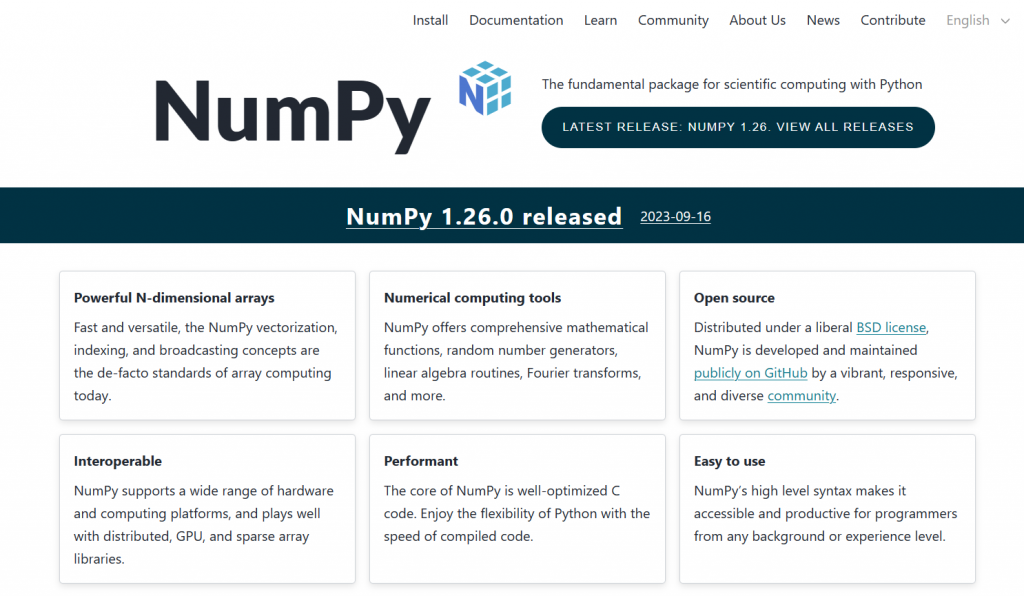
- NumPy, or Numerical Python, is a Python library developed by Travis Oliphant in 2005. It is launched under the modified BSD license liberal terms.
- Do you know why it is named NumPy? Because it provides functionalities for handling numerical operations efficiently.
- It facilitates linear algebra and matrix calculations, making it easier to perform complex mathematical operations commonly encountered in machine learning algorithms.
- NumPy arrays are implemented in the C programming language, resulting in faster data retrieval and manipulation than traditional Python lists. Also, they consume less memory and allow storing large data sets.
- The core of NumPy is well-optimized in C code and supports a wide range of hardware and computing platforms.
Get Expert Python Development Services for Your Project
Seeking for top-notch Python development company? Our proficient Python developers are poised to transform your ideas into reality.
Pytorch
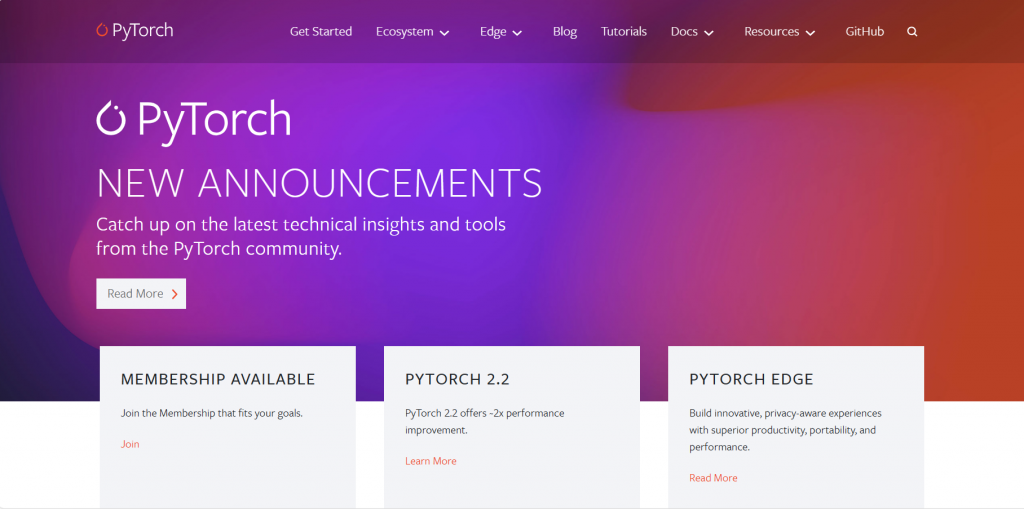
- Created by Meta’s AI research team in 2016, PyTorch helps build and train deep learning models. It has gained significant adoption and recognition by major companies like Microsoft, Walmart, Uber, and Facebook itself.
- PyTorch is suitable for projects that require quick development cycles. Why? Its user-friendly interface experiments and iterates efficiently, resulting in faster progress.
- It can handle large volumes of data while maintaining optimized performance, which is required for machine learning systems dealing with extensive datasets.
- This Python library offers compatibility with popular different cloud platforms such as Microsoft Azure, and Google Cloud, Alibaba Cloud, Amazon Web Services (AWS)
- Some of the applications built using PyTorch include Apple and Samsung Electronics.
Seaborn
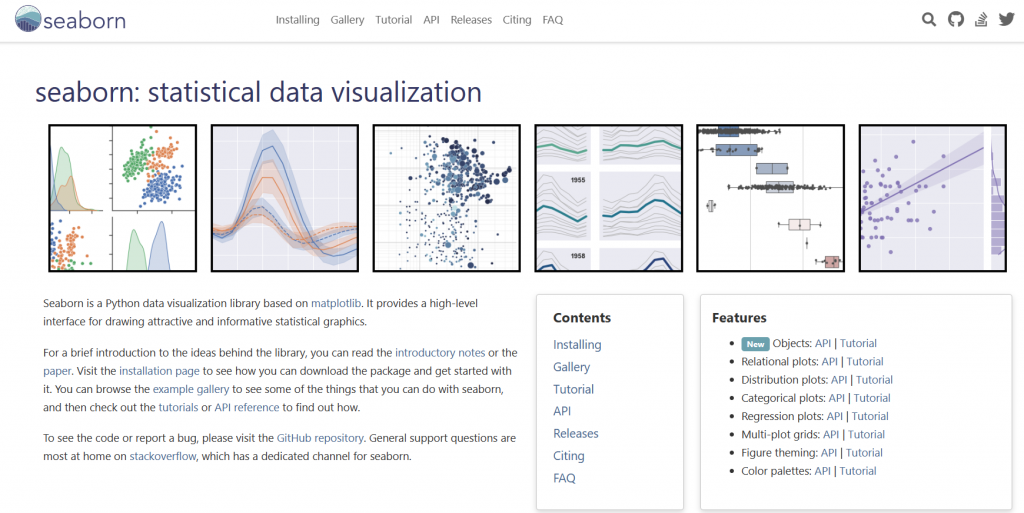
- Rounding up our list of top Python libraries with a popular Python data visualization library, Seaborn. It is built on top of Matplotlib and integrates with pandas’ data structures.
- Seaborn has a high-level interface for drawing attractive and informative statistical graphics. It helps developers explore and understand data as its plotting functions operate on data frames and arrays.
- Compared to all the available Python libraries, Seaborn produces the most appealing graphs and plots (as shown below). This makes it a perfect choice for marketing and data analysis.
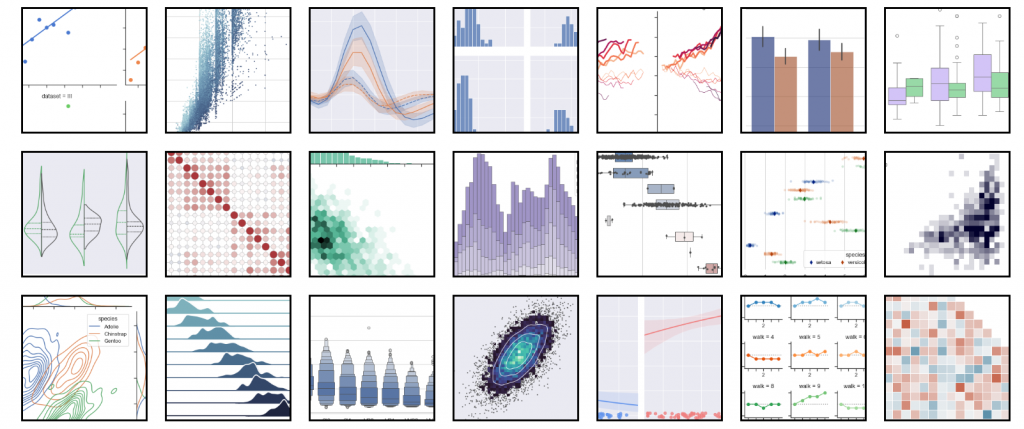
Conclusion
The use of ML is on the rise, and it’s high time for companies to adopt this technology for automation. And what’s better than using a wide range of powerful libraries offered by Python for machine learning tasks?
However, if you still find yourself uncertain about which libraries to choose or how to implement them, hire Python developers from Positiwise. Our team of experts is here to help you with all your app ideas.
Expert in Software & Web App Engineering
Parag Mehta, the CEO and Founder of Positiwise Software Pvt Ltd has extensive knowledge of the development niche. He is implementing custom strategies to craft highly-appealing and robust applications for its clients and supporting employees to grow and ace the tasks. He is a consistent learner and always provides the best-in-quality solutions, accelerating productivity.
